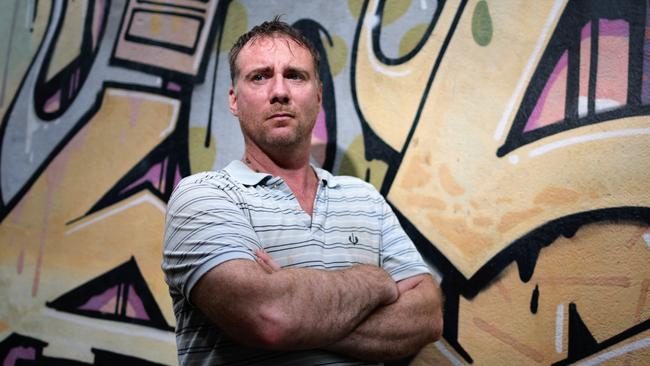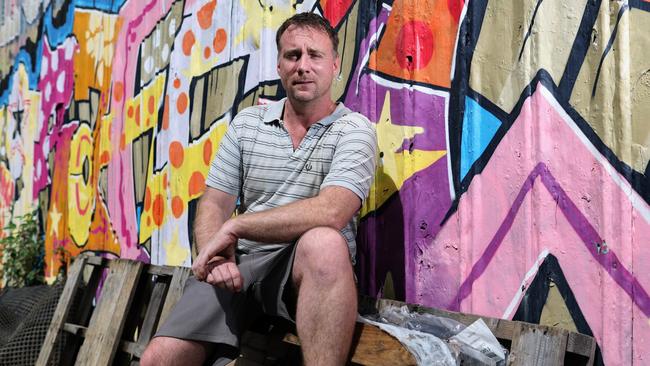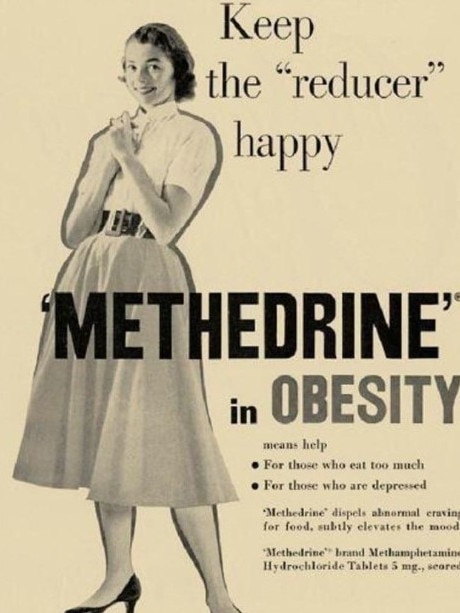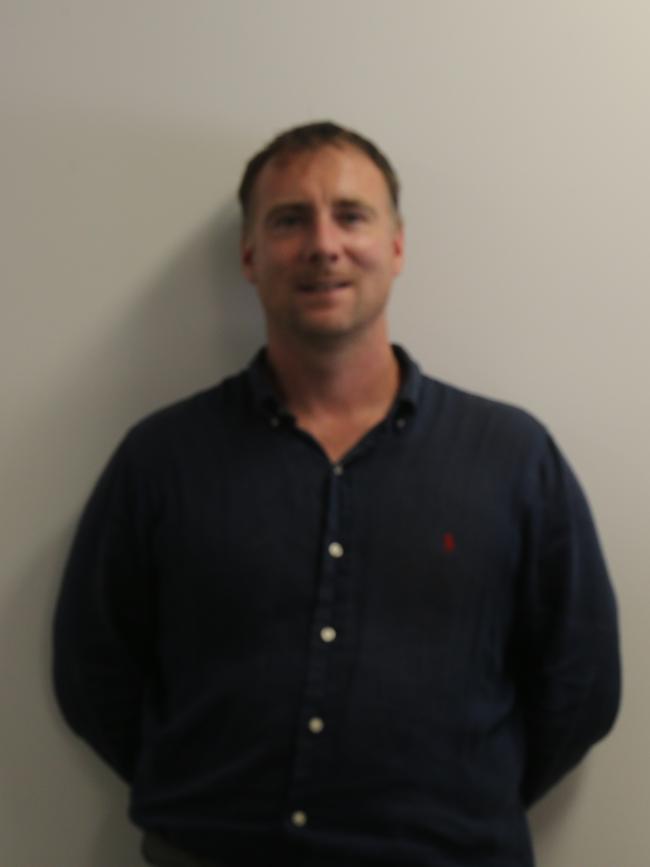Deep read: Journalist Luke Williams on fighting addiction as meth crisis grips Australia
Journalist Luke Williams tried meth while researching a book on the drug crisis in Australia. Here he shares how it sparked a wild addiction that led to a full psychosis.

SA Weekend
Don't miss out on the headlines from SA Weekend. Followed categories will be added to My News.
I was standing at an intersection on the fringe of an inner city morning. It was summer, peak hour. A blonde 30-year-old woman was fixing her hair in the car mirror waiting in her car at a red traffic light.
“Excuse me” I said “Can I please get in your car. A group of people are trying to kill me”.
She looked at me and said “I can’t do that, maybe try the car behind me”.
The light turned green. She drove off. Then the car behind her drove off.
“They must be in on it too”, I thought.
It was only then that I realised the woman walking past me with her dog was put there by a rival bikie gang who were being paid to protect me.
They were sending me covert messages. They were trying to tell me that they were going to do something to the being that meant the most to me – the gang were plotting to scoop out my Mum’s dog eyes.
It wasn’t a dream. Although being on meth feels it.
Five straight days without sleep. Talking in coded word salads, shooting up in a psych ward, shooting up with a psychologist – not my psychologist just a psychologist I met at a nightclub, calling a radio station and telling them I could hear gunshots but people are too scared calling the police, believing the bikies were going after my Mum but not before making her watch as they scooped her dog’s eyes out.

Then, the question would come – how did this all begin? I guess a lot of people are asking the same question.
In 2022 – 2023, approximately 200,000 people in Australia (1 per cent of the adult population) had used methamphetamine and amphetamine in the previous 12 months.
While this is lower than many other illicit drugs, including inhalants, ketamine, and hallucinogens – and certainly a lot lower than alcohol – the social harms which arise from meth are far higher per user.
So how did this happen? Methamphetamine was created by early 20th century pharmacists looking to see if would cure to the common old.
In fact, in the 1930s, 40s, 50s and 60s, methamphetamine was commonly sold in Australian pharmacies – mainly for weight-loss and for a while you didn’t even need a prescription. It was mainly often under the brand name Methedrine.
By the 1960s stories of abuse and even murders in America led the Australian Government to restrict its sale. What’s that thing they say about good intentions? Well, this is when the bikies stepped up, to sell it as speed on the street.
By around 2010, few amphetamine users were taking speed in Australia and they were all taking crystal methamphetamine.
Crystal meth is simply crystallised speed. Those with a background in chemistry will know that when something is crystallised it becomes far more potent.


The use of Crystal meth creates a rise in dopamine, which gives a feeling of pleasure, satisfaction and motivation. It also gives a temporary rise in serotonin (the body’s natural good mood chemical) and a reduction of Noradrenaline, which creates anxiety.
However, about one in five people who take the drug get drug-induced psychosis, just like it did for me, and the drug high is akin to having paranoid schizophrenia
Some crystal meth is made in Australia, but most of it is imported via Thailand, Hong Kong and Malaysia. But the authorities know it is made in huge quantities in Mexico and Myanmar.
Back to the personal, I cannot say there is a definitive reason for why I became a drug addict. I think if there was maybe I would have stopped myself from relapsing.
I can think of multiple reasons. I mean I’ve always liked adventure. Pushing the limits. Sticking pins through boundaries. Too much is never enough, and for me in particular, well, I’m certainly not enough. I’d also always rebelled against my parent’s life’s mission to lift themselves up from public housing and poverty, which always gave me shades of Hyacinth Bucket.
In the same way I’d been upwardly mobile too: published two books, done a law degree from a sandstone university, I’d been training as a lawyer in a big city. I’d guess I’d tried to lift myself too, I guess fittingly as it were, higher and higher, up and up and up
After nearly six years off the drug, I started again. It was in a cramped room in a sharehouse that I hated living in. My room had no windows and a single bed. There I was sitting on the end of it, a jetty lighter in one hand and a meth pipe in the other.
To be truthful even before that, my life was not going well. I felt embarrassed about the state of my career, my lack of housing, my lack of assets, and a non-existent love life.
When you smoke meth you feel like a winner. Stuck in that divey little room the meth serpent snaking its way through my veins, I was somewhere else – on the Olympic podium, in an orgy, on a first-class private jet.
It had been six years since I last picked up and within a few weeks I kept hearing secret codes in the office at work where I thought people were hinting that I smelt terrible and I resigned from my job.
A friend recently brought his partner to Narcotics Anonymous. She is the head of a small not-for-profit.
She said she found the message that you can either choose life or choose drugs, which lead you to institutions and death. The woman said she found this too simplistic, too black and white.
I know that for all the harms associated with meth use, there are people who still use without it having a dire impact on their health and life.
I’m not one of those people. For me, and other people who tend to addiction and psychosis, taken even a small amount of meth, the only way is down.
I’ve been to rehab four times. I often hear clients say they generally feel a lot better in life for not taking the drug but “nothing compares to a shot of meth”.
But the drug is not just a 10-second experience, it’s a 10-day experience (even more if you do something that has consequences when you are on the drug), and what follows is psychosis, fatigue, an inability to gain pleasure from everyday things, a loss of meaning and sadness – the cure is the poison; more meth.
Often drug addict’s recovery in rehab will make grand and impractical plans for their new life. Some of these plans have their genesis in amphetamine use – ideas that seemed great and achievable when you’re high.
This can be a way of justifying to yourself that the drug use was not all that bad, that there was a discernible benefit of an otherwise wasted time. I remember one guy in rehab, a former meth user, telling me he was glad to have stopped using drugs because he wanted to be an entrepreneur and sell his new invention; a toilet that never, under any circumstance, smelt.
“It’s simple don’t you think?” he said to me “Put it this way, would you rather a toilet that did smell or a toilet that didn’t?”

At that moment I realised just how long the road back from meth use was, not physically, but psychologically. Thinking habits when on the drug range from psychotic, to fanciful, to evil.
I guess people who have become drug addicts often have unusually strong experiences to the drug, they come to love the feeling so much that it’s all they seek, and the more they go to the drug, the less they are able to derive pleasure from anything else and the more problems they have in sober life.
This is the classic addiction cycle.
I had my own version of believing I could make shit not stink when I was a meth-head, the belief that I was going to be rapper, coupled with belief a London drag queen was sending me lyrics and beats by telepathy has been a pervasive thought during drug highs.
Me and Glastonbury? Yes, sure, but who would have thought? Least of all the model who never said hello to me or that manager at my old job who always said he didn’t like my work.
Then as if to punish me for unbalancing nature’s equilibrium, an hour later I’d go from picturing me being worshipped to believing my only friends were being paid by my parents, and later again – that they were paying a group of bikies to kill me.
The good news is people do find ways to stop, six per cent of the adult population have used meth at some time in their life but haven’t used in the past year.
The thing I have come to learn most of all at Narcotics Anonymous is to hear about what people now do instead of taking drugs.
The most satisfied and the ones who stay clean the longest are the ones who talk about how it’s the simple things that keep them going – sunsets, movies, travel, walking down the street not believing people are trying to kill you, the moment when their parents, friends or kids finally start talking to them again.
That’s the signifier that you’re truly on the road back from meth addiction.




